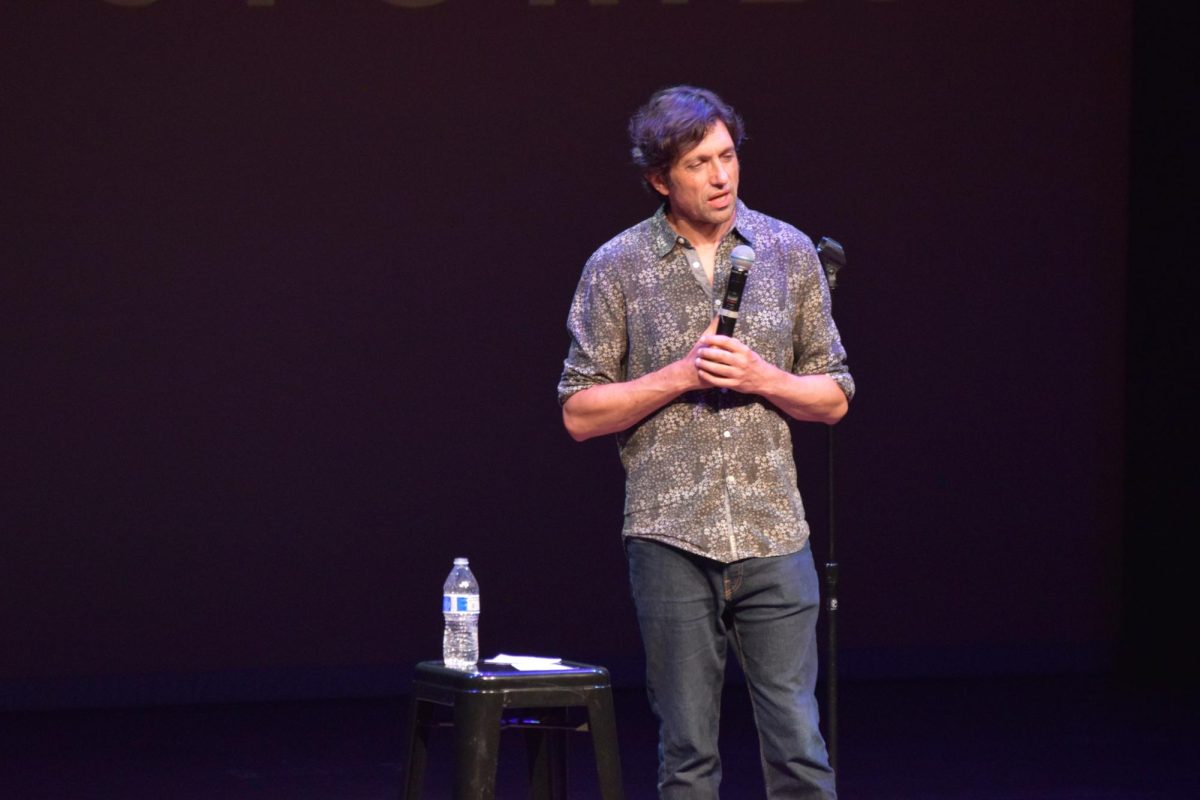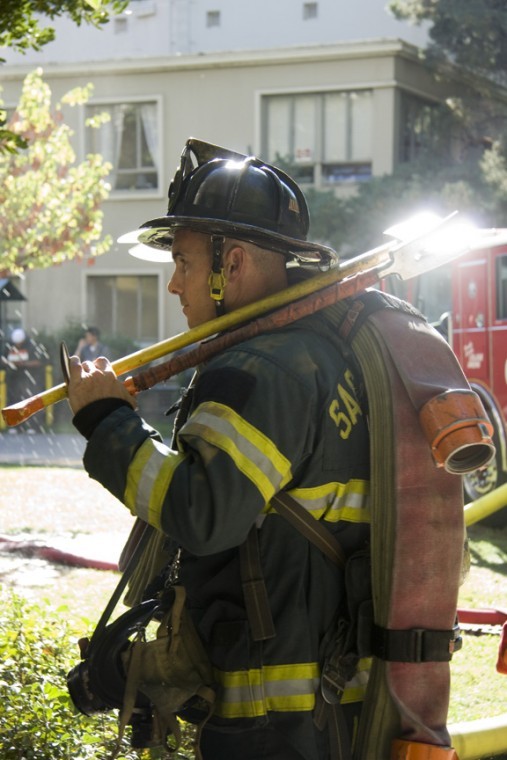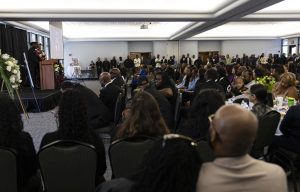Some ENS tools unused
A Sacramento Fire Department firefighter in full gear, prepares to battle the flame on the smoke-filled fifth floor of Mendocino Hall Thursday, which did not suffer as much damage as the fourth floor of Mariposa Hall.
October 19, 2011
After Thursday’s fires at Sacramento State, some students are wondering why the university did not use the Emergency Notification System mass text message to alert the those who are signed up, while others believe the university acted appropriately by sending emails and using social media to convey the message.
According to the ENS website, an alert is sent out “When the campus Police Department becomes aware of a critical situation that has the potential of causing harm or imminent danger.”
Sac State spokeswoman Kim Nava said a text message alert did not go out because there was no imminent danger to students.
At 5:30 p.m. Friday, Phil Garcia, vice president of Public Affairs and Advocacy, sent a press release via SacLink explaining why the ENS was not used the day prior.
“In cases like Thursday’s contained fires, an ‘Urgent Message’ will be emailed to all campus community members, and updates posted on the university’s homepage as well as on its Facebook and Twitter sites,” according to the release.
Jennifer Mueller, a Sac State student, responded to a post on The State Hornet’s Facebook page, questioning the university about not using the ENS.
“I think that the school not using the ENS text messaging service yesterday was a big mistake,” Mueller wrote on the Hornet’s Facebook. “I mean, why even have it if it’s not going to be
used? I’m sure that if the text messages had been deployed, there would have been a lot less confusion and panic as to what was going on.
“I had to learn about what was going on through the school’s Facebook page and emails that the school sent out, which just seem less effective than if I had received the ENS texts. I was
pretty disappointed.”
Not everyone thought the school was wrong for not sending out a mass text message.
Joey Peterson, a Sac State student, said the school did the right thing by not using the ENS.
“There was no reason to use ENS. The fires only affected a small amount of people that were on campus and would have just caused unnecessary commotion at the time,” Peterson wrote on the Hornet’s Facebook page. “The school did a fine job at updating their Facebook and Twitter on what was happening. They even sent everyone an email last night explaining what the plans for today’s classes and had information on their website.
“I don’t know how many different ways of communication one needs? They updated everyone on what was going on in four different places! If you were unsure what was going on, the first place you should have checked was the school website and your school email (both explained what was going on).”
The ENS is more than just a text messaging system.
“ENS has several different notification vehicles that are tailored to the actual emergency,” Nava said. “So, we can send … our emails; if it’s a more direct threat or imminent threat, we can call up cell phones or use the text message and use the loudspeaker system.
“So, these are things that we would do if there was an imminent emergency – if there was an active shooter on campus, for instance.”
While the vast majority of students have cell phones – many of which receive text messages – the ENS is an optional service for which not every student is signed up.
“We have looked at it, and the actual amount of students who have signed up for the ENS is not that many,” Nava said.
Since the ENS’s inception, roughly 20 percent of the student population has signed up for the service, Nava said. It was implemented in April 2007 after the shooting at Virginia Tech.
She said the school sent an email as quickly as possible to alert students of the situation.
“The reason why we did the email is because we know we can get 100 percent of our faculty, staff and students and get information out that way to them,” Nava said. “That’s a failsafe – we know we’ve got that communication out there, along with everything else.”
However, if students do not actively check their SacLink accounts for updates on emergencies, this method of delivery is not ideal.
“We’re hoping the message to get out from this that we do want do want students to check their SacSend,” Nava said. “If this is something where they need to know immediately and this is imminent danger, this is not even a question. We would use that in addition to everything.”
Nava said the university is reviewing the use of the ENS text message tool and could possibly make changes in the future, depending on demand.
“We’re reviewing all these things,” Nava said. “We’re listening to what people say and if they’re saying, ‘We want a text message no matter what; all these other ways of getting it out – it’s not good enough for me,’ we’ll go ahead and do that, too.”
Dustin Nosler can be reached at [email protected]

























































































































